Hialeah, FL Pollen and Allergy Report for Summer 2023
Pollen Allergy Trends in Hialeah, FL
When is pollen lowest in Hialeah, FL?

May
Lowest month total PPM
Avg. PPM
When is pollen highest in Hialeah, FL?

April
Highest month total PPM
Avg. PPM
How does pollen in Hialeah, FL compare to Florida?
Hialeah has a higher average PPM than the state of Florida.
Hialeah yearly avg PPM:
Florida yearly avg PPM:
How does pollen in Hialeah, FL compare to the USA?
Hialeah has a higher average PPM than the USA.
Hialeah yearly avg PPM:
USA yearly avg PPM:
Is pollen worse this year in Hialeah, FL?
Spring 2023 was better than spring 2022.
Spring 2023 PPM:
Spring 2022 PPM:
Average PPM in Hialeah, FL
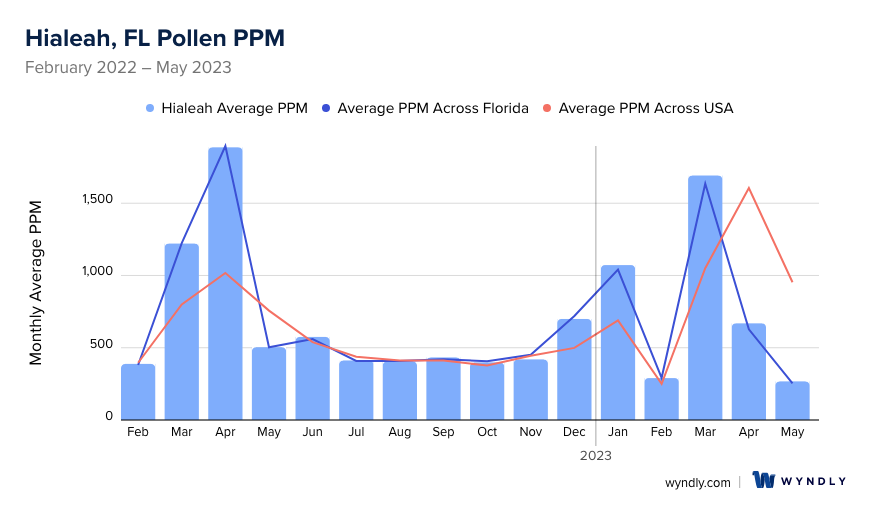
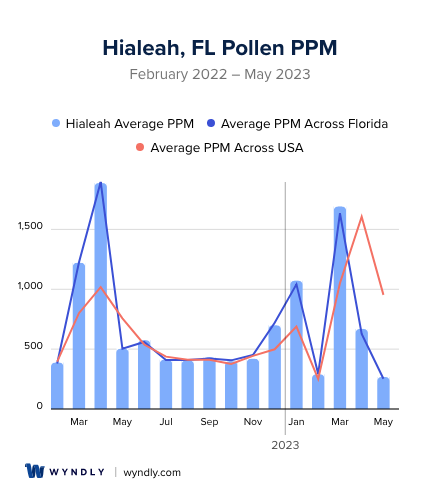
Hialeah, FL Pollen and Allergy Breakdown by Month
Grass
When is grass pollen highest in Hialeah, FL?
April has the highest grass pollen in Hialeah, FL with an average PPM of
When is grass pollen lowest in Hialeah, FL?
December has the lowest grass pollen in Hialeah, FL with an average PPM of
Tree
When is tree pollen highest in Hialeah, FL?
March has the highest tree pollen in Hialeah, FL with an average PPM of
When is tree pollen lowest in Hialeah, FL?
July has the lowest tree pollen in Hialeah, FL with an average PPM of
Weed
When is weed pollen highest in Hialeah, FL?
June has the highest weed pollen in Hialeah, FL with an average PPM of
When is weed pollen lowest in Hialeah, FL?
February has the lowest weed pollen in Hialeah, FL with an average PPM of
Hialeah, FL Pollen Monthly Breakdown by Pollen Type
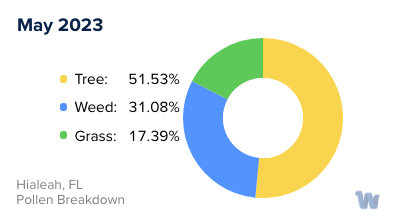
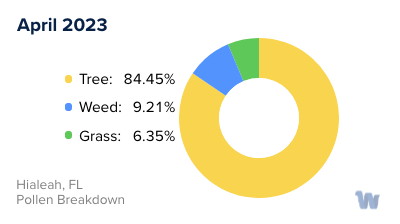
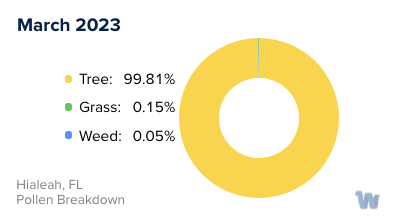
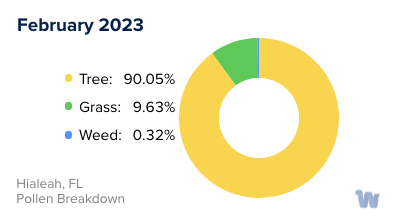
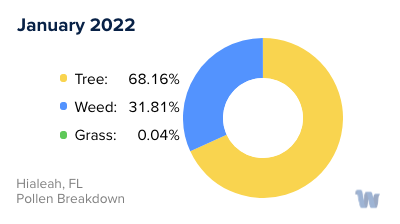
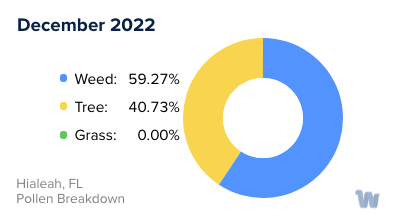
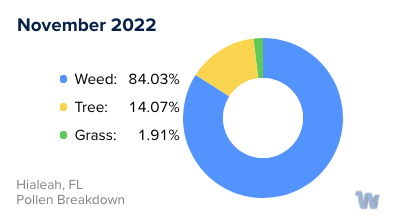
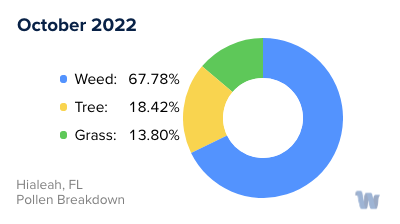
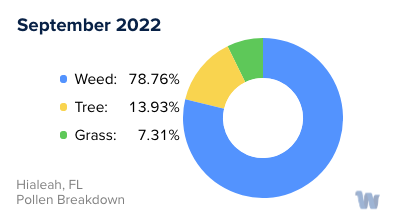
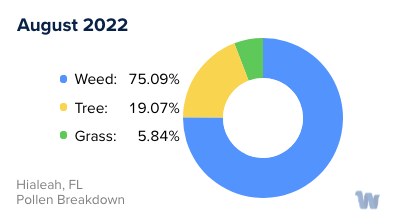
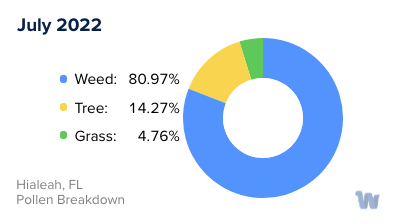
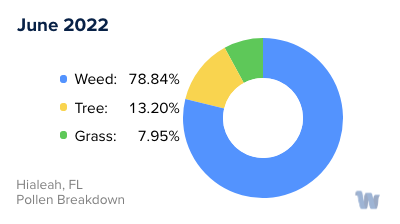
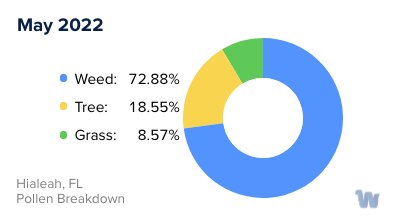
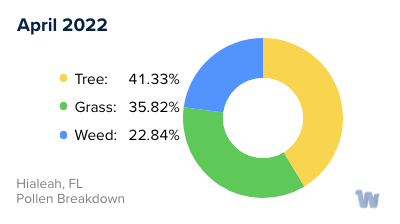
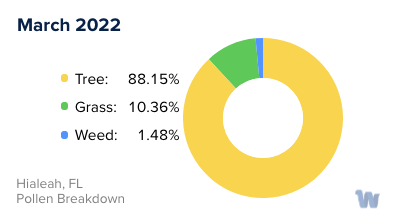
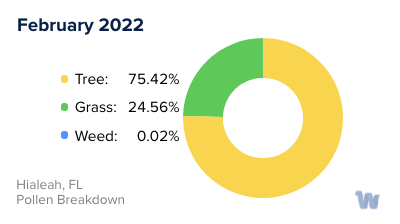
Pollen and Hay Fever in Hialeah, FL
As a city bathed in sunshine, Hialeah, Florida is a place that seems to be in a perpetual state of bloom. This abundance of plants may be a delight for the eyes, but for those sensitive to pollen, it can present a seasonal challenge known as hay fever or pollen allergies.
Pollen allergies, a common form of seasonal allergic rhinitis, are triggered when the immune system reacts to pollen as if it were a harmful substance. In Hialeah, this issue is not restricted to a single season, as various plants flower and release pollen throughout the year.
The most common culprits in the Hialeah area are trees, particularly oak and pine, which tend to release their pollen in the spring. This time of year often sees the highest pollen counts, and the symptoms of hay fever - sneezing, a runny or stuffy nose, and itchy or watery eyes - can be particularly pronounced.
As summer arrives, the grasses take their turn, with Bermuda grass and Bahia grass being the primary contributors to the pollen count. These grasses flourish in the warm, humid Florida climate, and their pollen can be as pervasive as the sunshine.
In the fall, the focus shifts to weeds. Ragweed, a plant that thrives in the sandy soil of Florida, begins to release its pollen in late summer and continues through the fall. A single ragweed plant can produce up to a billion grains of pollen per season, making it a significant contributor to fall allergies.
Pollen allergies can significantly impact the quality of life for those who suffer from them. Understanding the types of pollen in your area and the seasons in which they are most prevalent can help you anticipate and manage your symptoms. In Hialeah, the variety of plants and the extended growing season mean that pollen is a nearly year-round concern. However, with knowledge and preparation, it is possible to enjoy the beauty of Hialeah while minimizing the discomfort of hay fever.

